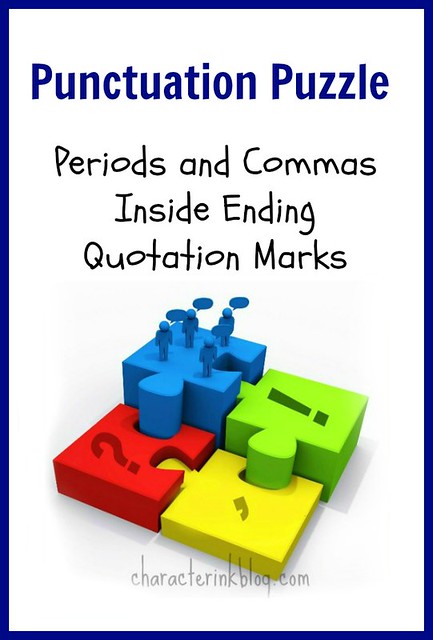by Donna | Feb 28, 2018

I’ve been teaching Major and Minor Works in every class and every private writing student meeting for two weeks now–and I feel like a broken record!
(Since I was teaching so much about it, I have provided teaching for my blog readers too—did you see these:
1) Color Essay Video Teaching (lots of detailed instruction on Major and Minor Works in the video AND the free lesson)
2) 5 Tips for Major and Minor Works From Language Lady (Yes, I got carried away and made a slideshow about it too!)
3) Tricky Tricks Download–print these off for your students!)
(more…)
by Donna | Jul 16, 2017

By Zac Kieser and Donna Reish
Welcome to another Punctuation Puzzle! Yep… a puzzle that you solve by putting in the correct punctuation and words/usage fixes—along with explanations and answers about each error!
Perfect for students and teachers alike!
Today’s Puzzle is about Periods and Commas Inside Ending Quotation Marks … and it uses an interesting sentence from one of our Write-for-a-Month/Write On books.
Read More….
by Donna | Jan 18, 2013
A comma or not following an “unofficial” speech tag? When you write a true opening speech tag (he said, she responded, he asked), you need a comma separating it from your quoted words:
She said, “I love to write Language Lady blog posts.”
However, if you write an “unofficial” opening speech tag (According to Websters Dictionary, kindness is or Kindness can be defined as), do not place a comma before your quoted words.
According to Webster’s Dictionary, kindness is “an act of compassion.”
Kindness can be defined as “an act of compassion.”
The “official” rule on this is that other than true speech tags with quoted material following, you can not use a comma between a verb and its object or a preposition and its object:
NOT: According to Webster’s Dictionary, kindness is, “an act of compassion.” That would be a comma between the verb is and its object (predicate nominative in this case…)
NOT: Kindness can be defined as, “an act of compassion.” That would be a comma between the preposition as and its object (a phrasal object in this case).
by Donna | Jun 15, 2011
 |
| Image from kswptim.wordpress |
If you are an avid reader, and especially if you are an avid reader of British literature, you may find yourself being led astray in the whole “commas and periods inside or outside of ending quotation mark” quandary. Why? Because British usage is different than American usage when it comes to this little rule.
The first rule that we teach in our writing books about quotation marks is this: Commas and periods ALWAYS go inside the final quotation mark:
- She said, “Let’s go now.”
- “Let’s go now,” she said.
- He was reading the article, “Baby Geniuses.”
- He was reading the article, “Baby Geniuses,” and he lost track of time.
Regardless of the reason for the quotation mark use (i.e. for a quote in 1 and 2 above or to show a minor work {article title} in 3 and 4), the ending period and comma always go inside the final quotation mark in US usage.
The reason that you might see it differently could be that you are reading a British author. (British usage bases the placement of the comma and period inside or outside of the quotation mark on whether the period/comma is part of the quoted material, like US grammar does for question marks and exclamation marks.) Or, it could be an error—I see this error more often than any other one error.
So remember this for you American writers/students: Periods and commas ALWAYS go inside the final quotation mark—never on the outside, regardless of the use in the sentence.







